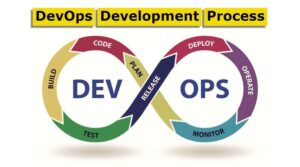
Popular Blockchains for NFT Development in 2023
What is a blockchain? It is a chain of blocks. When information is accumulated gradually, it does so in blocks, with each new block sitting atop the one before it. A cryptographic hash, a timestamp, and transaction data are all included in each block. Moreover, the hashes serve as the glue that binds successive blocks together, giving rise to the blockchain.
In addition, blockchains are run by a decentralized P2P group of users. When using a P2P network, your data is not stored or managed by any entity. Any time a user wants to share data with another user, they can do so without going through any kind of centralized server or database.
Non-fungible tokens (NFTs) are digital assets that can only be acquired through the blockchain and are sold for a fixed price in a specific cryptocurrency. and these non-fungible tokens can be shared via QR code. To put it another way: NFTs are made exclusively for online consumption and circulation. NFTs are typically not backed by anything physical, and all trades involve them on a distributed network of computers. Additionally, by scanning a QR Code, one can quickly access the digital asset’s details, including its ownership, history, and provenance, providing a streamlined and secure way of managing NFT transactions.
NFTs and Blockchain in the Metaverse
Having established the blockchain’s and the metaverse’s link, NFTs can be added to the equation. A more intelligent metaverse is possible with blockchain technology. Blockchains can help these virtual worlds accomplish a lot, from establishing automatic modes of transaction to making the metaverse identities more exclusive through smart contracts.
Simply put, smart contracts are pieces of code that can facilitate the autonomy of an ecosystem. If the metaverse ever becomes a reality, everyone who enters it will need some sort of proof-of-ownership document, whether it’s to buy a ticket to a virtual concert or to buy and sell items within the ecosystem. This is where the use of NFTs (or non-fungible tokens) enters the picture, granting participants in the metaverse the freedom to spend their tokens as they see fit. In a nutshell, the metaverse has NFT support thanks to the underlying blockchain technology.
What Role could NFTs play in Healthcare?
Non-fungible tokens, or NFTs, could be used to transform the way patients gain access to their health records. Are you curious about the potential NFT role in healthcare data?
A digital asset’s online location can be accessed by NFTs using the asset’s unique identifier. When applied to medical data, the technology has the potential to de-identify copies of a person’s health information that are under the control of the patient.
Patients currently have little say over their medical records. Data is freely available and commercialized by large corporations. These companies are making millions off of selling your genetic data, but they aren’t giving you any of the money.
NFTs would allow patients to take control of their medical records via a blockchain-based distributed ledger. This would also give patients the ability to monitor the sale of their data and potentially put a stop to it or profit from it themselves.
Also, read about other Blockchain concepts also, like blockchain development services for healthcare, how blockchain will work in the future for healthcare, and much more.
Top Blockchains for NFT Development
NFTs have risen to prominence primarily due to the emergence of trade in digital artworks as fine art. But also in gaming, the music industry, and much more. Over the past few years, NFTs have gained a lot of traction. This led to the formation of large, well-known collections of NFTs, each of which fetched astronomical prices at auction.
1) Ethereum
The Ethereum blockchain underpins the vast majority of notable NFT collections. Because Ethereum was such an early adopter of smart contracts, this evolution was inevitable. Most prominent NFT marketplaces, such as OpenSea, Raible, etc., have also surfaced on Ethereum in recent years.
2) Solana
Regarding the NFT market, Solana is the second-largest blockchain after Ethereum. The network’s speed and scalability are two of its most impressive features. In 2021, due largely to his innovations in NFTs, prices rose dramatically. The Solana blockchain is the foundation for numerous NFT projects, and there are dedicated NFT trading platforms for Solana NFTs.
3) Cardano
Cardano’s use cases have progressed slowly, but the network recently announced that it has risen to third place in the NFTs market in terms of revenue. In the eyes of many financiers, Cardano is the most efficient blockchain in theory.
Cardano can potentially become extremely dominant in the NFT market in the future.
NFTs – The Future of The World
Many fields have been upended by NFTs, from the creative to the financial to gaming and gaming. Even so, non-fungible tokens have not yet reached their full potential. Twitter, Meta, Reddit, and investors are constantly releasing new NFT projects, and startups pour a lot of money into NFTs.
So, where do you see NFTs going from here? Can you name some industries they’ll likely attack next?
In times of crisis and when normal routines are upended, people are often spurred to think creatively. The financial situation of 2008 was exacerbated by the fact that the largest banks had placed their customers’ funds in high-risk investments.
To fix a broken system, this upheaval sparked the creation of blockchain technology. All digital currencies and NFTs are powered by blockchain, which can be thought of as the system on which they operate.
As all transactions are recorded in the blockchain, tampering, hacking, or cheating the system becomes extremely difficult. Decentralization refers to the practice of shifting authority and decision-making away from a central authority figure or body and instead to a network of individuals (groups of people).
The revolutionary nature of this technology necessitates openness, responsibility, and autonomy on everyone’s part.
In 2021, NFTs were all the rage. With billions of dollars changing hands and a vibrant community supporting the technology, non-fungible tokens are being adopted by sectors as varied as gaming, finance, art, and medicine.
Conclusion
As a crypto enthusiast, one must skim the possibilities of making their NFT project a huge success. And the first step is choosing the appropriate blockchain. An innovative approach to making money online, this idea can serve as the foundation for a successful enterprise. In closing, I want to emphasize something for readers who are interested in blockchain technology and are hoping to find a solution that will put their business ahead of others, bringing about positive results for the planet as well as the bottom line.







